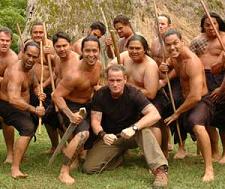|
For centuries, Hawaiian warriors practiced the
martial art of lua under a veil of secrecy. They were as expert, renowned,
and revered as the military special forces of today. With the changing
times, the number of those extensively trained in lua declined and it became
a lost art. By the late 1980's, few knew that a unique Hawaiian martial art
still existed. Now for the first time ever, Lua: Art of the Hawaiian Warrior
offers an introduction to the history, philosophy, techniques, weapons, and
current training practices of the Hawaiian fighting art. island of Hawaii
through Keawe and two of his wives. |
 |
|
Lua: Art of the Hawaiian Warrior is an
essential resource for martial arts practitioners, as well as students of
Hawaiian history and culture. Authored by four of the first five students of Lua
Grandmaster Charles William Luaukia Kaho Kemoku Kenn (1907-1988) who ever
attained the status of olohe lua (lua master), Lua: Art of the Hawaiian Warrior
seeks to present not only the martial art itself, but the truth, philosophy and
wisdom behind this ancient Hawaiian art of combat. About the Authors: Richard
Paglinawan is a descendant of Kapule, a warrior priest originally from Kohala,
Hawaii, who served in the army of Kalaniopuu and later, Kamehameha I. Mitchell
Eli has over forty years experience in various martial arts, and is
knowledgeable in lomilomi and other Hawaiian healing arts. Mitchell is a
descendant of the Piailani line of Maui chiefs. Moses Kalauokalani is a
descendant of David Kalauokalani, who initiated a petition of protest of the
overthrow and annexation of the Kingdom of Hawaii. Jerry Walker has been
training in various martial art forms since 1961. He is an educator,
genealogist, historian, and writer. His lineage can be traced to the |













